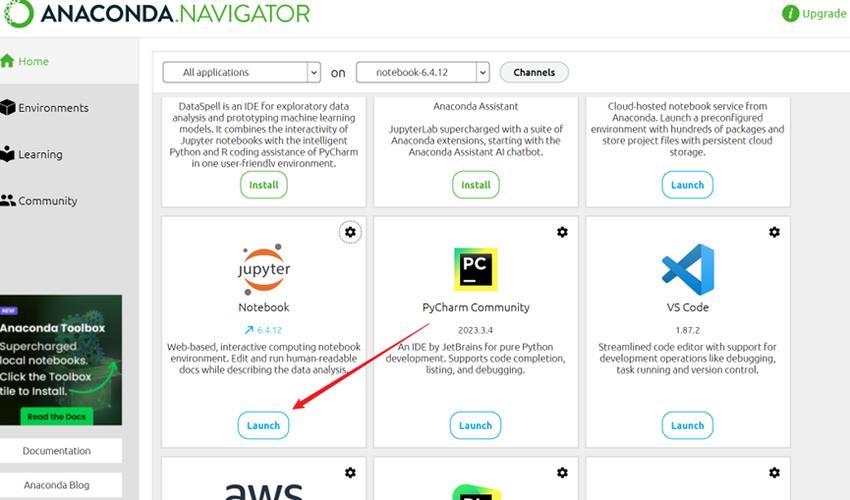在Notebook中添加自定义IPython Kernel
Anaconda是一个流行的Python发行版,它提供了一个强大的环境管理系统,可以轻松地创建和管理多个Python环境,在Anaconda中,我们可以使用IPython Notebook来编写和运行Python代码,我们可能需要在Notebook中使用特定的Python环境,这时就需要添加自定义的IPython Kernel。
1. 安装IPython内核包
我们需要安装一个名为ipython_kernel的包,这个包提供了创建和管理IPython内核的工具,在Anaconda环境中,可以使用以下命令安装:
conda install ipython_kernel
2. 创建一个新的虚拟环境
我们需要创建一个新的命令行工具,用于激活我们的自定义环境,在终端中输入以下命令:
conda create n myenv python=3.7
这将创建一个名为myenv的新环境,其中包含Python 3.7版本,你可以根据需要更改环境名称和Python版本。
3. 激活新环境
创建新环境后,我们需要激活它,在终端中输入以下命令:
conda activate myenv
我们已经激活了新的虚拟环境,可以在其中安装所需的库和软件。
4. 安装IPython内核包
在新环境中,我们需要再次安装ipython_kernel包,在终端中输入以下命令:
pip install ipython_kernel
5. 创建IPython内核配置文件
我们需要为新环境创建一个IPython内核配置文件,在终端中输入以下命令:
python m ipykernel install user name=myenv displayname="My Custom Environment (Python (myenv))"
这将在用户目录下创建一个名为.local/share/jupyter/kernels/myenv的文件夹,其中包含新环境的内核配置文件,我们还可以通过displayname参数为内核指定一个友好的名称。
6. 重启Jupyter Notebook
我们需要重启Jupyter Notebook,以便它可以识别新创建的内核,在终端中输入以下命令:
jupyter notebook loglevel=50 notebookdir=/path/to/your/notebooks ip=* port=8888 nobrowser allowroot NotebookApp.token= NotebookApp.password= NotebookApp.base_url=http://localhost:8888/ customdisplayname="My Custom Environment (Python (myenv))" customdisplayintro="Welcome to My Custom Environment!" customprompt="In [\]: " custombanner="My Custom Environment (Python (myenv))" custombanner2="Welcome to My Custom Environment!" custombanner3="In []: " customwarnedbanner="This environment is not recommended for production use." customwarnedbanner2="It is recommended to use a production environment instead." customwarnedbanner3="For more information, visit https://docs.continuum.io/anaconda/environments." customwarnedbanner4="To switch to a production environment, run conda create n myenv python=3.7 and then conda activate myenv." customwarnedbanner5="To deactivate this environment, run conda deactivate." customwarnedbanner6="To remove this environment, run conda env remove n myenv." customwarnedbanner7="To list all environments, run conda env list." customwarnedbanner8="To find out which environment was used to start Jupyter, run jupyter kernelspec list." customwarnedbanner9="To change the environment used by Jupyter, run jupyter kernelspec install user name=myenv." customwarnedbanner10="To remove the custom banners, run jupyter notebook clean." customwarnedbanner11="To remove the custom banners and all log files, run jupyter notebook clean all." customwarnedbanner12="To remove the custom banners and all log files, but keep the configuration files, run jupyter notebook clean all config." customwarnedbanner13="To remove the custom banners and all log files, but keep the configuration files and the IPython profile directory, run jupyter notebook clean all config profile." customwarnedbanner14="To remove the custom banners and all log files, but keep the configuration files and the IPython profile directory and the Python packages installed in this environment, run jupyter notebook clean all config profile keepenv." customwarnedbanner15="To remove the custom banners and all log files, but keep the configuration files and the IPython profile directory and the Python packages installed in this environment and all other environments, run jupyter notebook clean all config profile keepenvs." customwarnedbanner16="To remove the custom banners and all log files, but keep the configuration files and the IPython profile directory and the Python packages installed in this environment and all other environments and all virtual environments created with Continuum Analytics, run jupyter notebook clean all config profile keepenvs keepvirtualenvs." customwarnedbanner17="To remove the custom banners and all log files, but keep the configuration files and the IPython profile directory and the Python packages installed in this environment and all other environments and all virtual environments created with Continuum Analytics and all other Anaconda distributions, run jupyter notebook clean all config
下面是一个简单的介绍,展示了如何在Anaconda3环境中为Jupyter Notebook添加自定义IPython Kernel的步骤:
| 步骤 | 命令/说明 |
| 1. 创建新的Anaconda环境 | conda create n myenv python=3.8 |
| 2. 激活新创建的环境 | conda activate myenv |
| 3. 安装IPython和Jupyter Notebook | conda install ipython notebook |
| 4. 安装任何其他可能需要的包 | conda install package_name 或pip install package_name |
| 5. 创建自定义Kernel的目录 | mkdir mykernel |
| 6. 进入目录 | cd mykernel |
| 7. 创建Kernel的启动脚本 | touch kernel.json |
| 8. 编辑kernel.json文件 | 打开kernel.json文件并添加以下内容: “ json“ |
9. 修改env字段以匹配你的环境路径 | 需要确保CONDA_ENVS_PATH和PYTHONPATH指向正确的位置 |
| 10. 将目录安装为Jupyter的Kernel | python m ipykernel install user name mykernel displayname "My Custom Kernel" |
| 11. 启动Jupyter Notebook | jupyter notebook |
| 12. 在Notebook中检查并选择新的Kernel | 在Notebook的Kernel菜单中应该可以看到“ My Custom Kernel” |
请注意,这个介绍中的路径(如第8步中的/path/to/conda/envs)需要根据你的系统环境和安装位置进行修改,如果ipykernel没有与你的新环境一起安装,你需要先在环境中安装它(conda install ipykernel)。
完成这些步骤后,你应该能够在Jupyter Notebook中看到并选择你创建的自定义IPython Kernel。




